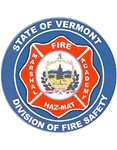Traffic Incident Management - Woodbury
Date: October 29, 2020
Time: 1800 - 2200
Application Deadline: October 15, 2020
***Click Here for the application
Three injury crashes occur every minute in the United States, putting nearly 39,000 incident responders potentially in harm's way every day. Congestion from these incidents often generates secondary crashes, further increasing traveler delay and frustration. The longer incident responders remain at the scene, the greater the risk they, and the traveling public, face. A cadre of well-trained responders helps improve traffic incident response. Better incident response improve the safety of responders and drivers, reduces crashes that occur because of incident-related congestion, decreases traffic delays caused by incidents, and can cut incident response time.
The National Traffic Incident Management Responder Training was created by responders for responders. This course provides first responders a shared understanding of the requirements for safe, quick clearance of traffic incident scenes; prompt, reliable and open communication; and motorist and responder safeguards. First responders learn how to operate more efficiently and collectively.
This training covers many TIM recommended procedures and techniques, including TIM fundamentals and terminology, notification and scene size-up, safe vehicle positioning, scene safety, command responsibilities, traffic management, special circumstances, and clearance and termination. This training was developed through the second Strategic Highway Research Program (SHRP2).

